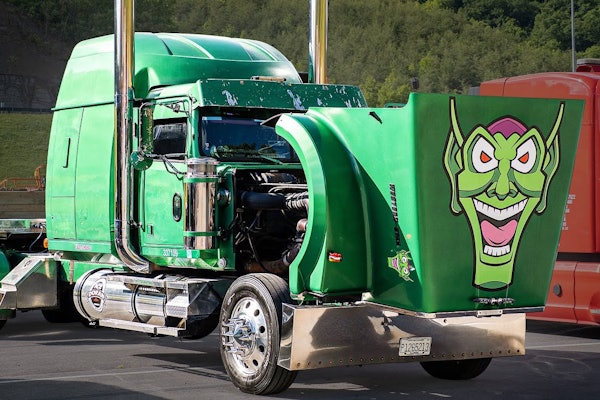The freight market continues to be stagnant this year, but looming 2027 emissions regulations will potentially increase the cost of new vehicles, said FTR Commercial Vehicles Senior Analyst Dan Moyer at the FTR Transportation Conference in Indianapolis.
Order activity is currently at replacement levels, Moyer noted, with orders up 14% year-to-date, partly due to a strong start of the year.
The last order cycle that began September 2023 really ramped down starting in February, but this year was a lot lower and at a much lower peak from the prior month. This is reflected the slowdown of the freight market and the stagnation that we’re currently seeing for quite some time, Moyer said.
Orders have been slowing for some time, with the last three months indicating a negative year-over-year decline. Typically, there would be around 20% year-over-year increase from July to August, so the monthly increase of 2% was a lot less than expected.
Other disruptions also made an impact
In April, a mirror plant that was a supplier for a significant portion of the commercial vehicle industry caught on fire, resulting in around 10,000 red tag units (trucks that are built but not shipped), and fluctuations in factory shipments. Moyer said his firm has seen improvements and reductions in red tags, which they expect to be resolved in the months ahead and before year end.

OEMs have maintained truck production at a high level, Moyer noted. Manufacturers are reluctant to lay off employees in the event of a rebound in the freight market and a surge of an emissions pre-buy.
Lead times for new trucks are around 4.2 months, with Moyer noting that it’s at the lower end of the typical four to six-month range. “It’s getting very close to a point where OEMs will likely have to cut back on production,” said Moyer.
FTR predicts that 280,000 Class 8 trucks will be built in 2025, a 7.1% increase from their March forecast of 265,000 trucks. A pre-buy could boost order activity to 352,000 in 2026.
Moyer foresees pre-buying to start in the second quarter of 2026. “If that is happening now, it’s not being reflected in the market indicators yet. And we don’t really expect it,” he said.
 FTR
FTR
Inventories have reached record highs due to heightened production and a drop in sales, hitting 86,100 in July – a 4% rise from the previous month and a 48% increase from a year ago.
“While the inventory-to-sales ratio for North American Class 8 is not at a record level, those prior peak back during the great recession and during COVID were really driven by the crazy fluctuations in the market during these economic disruptions,” said Moyer.
Autonomous trucks and other technological advances that are being developed will also have a particular influence in the market, Moyer said.














